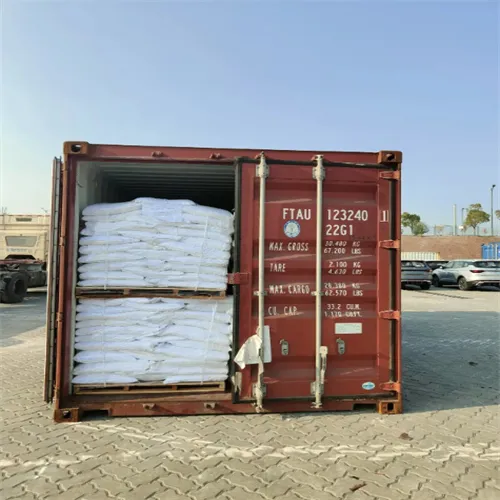Warning: Undefined array key "title" in /home/www/wwwroot/HTML/www.exportstart.com/wp-content/themes/1198/header.php on line 6
Warning: Undefined array key "file" in /home/www/wwwroot/HTML/www.exportstart.com/wp-content/themes/1198/header.php on line 7
Warning: Undefined array key "title" in /home/www/wwwroot/HTML/www.exportstart.com/wp-content/themes/1198/header.php on line 7
Warning: Undefined array key "title" in /home/www/wwwroot/HTML/www.exportstart.com/wp-content/themes/1198/header.php on line 7
- Afrikaans
- Albanian
- Amharic
- Arabic
- Armenian
- Azerbaijani
- Basque
- Belarusian
- Bengali
- Bosnian
- Bulgarian
- Catalan
- Cebuano
- China
- China (Taiwan)
- Corsican
- Croatian
- Czech
- Danish
- Dutch
- English
- Esperanto
- Estonian
- Finnish
- French
- Frisian
- Galician
- Georgian
- German
- Greek
- Gujarati
- Haitian Creole
- hausa
- hawaiian
- Hebrew
- Hindi
- Miao
- Hungarian
- Icelandic
- igbo
- Indonesian
- irish
- Italian
- Japanese
- Javanese
- Kannada
- kazakh
- Khmer
- Rwandese
- Korean
- Kurdish
- Kyrgyz
- Lao
- Latin
- Latvian
- Lithuanian
- Luxembourgish
- Macedonian
- Malgashi
- Malay
- Malayalam
- Maltese
- Maori
- Marathi
- Mongolian
- Myanmar
- Nepali
- Norwegian
- Norwegian
- Occitan
- Pashto
- Persian
- Polish
- Portuguese
- Punjabi
- Romanian
- Russian
- Samoan
- Scottish Gaelic
- Serbian
- Sesotho
- Shona
- Sindhi
- Sinhala
- Slovak
- Slovenian
- Somali
- Spanish
- Sundanese
- Swahili
- Swedish
- Tagalog
- Tajik
- Tamil
- Tatar
- Telugu
- Thai
- Turkish
- Turkmen
- Ukrainian
- Urdu
- Uighur
- Uzbek
- Vietnamese
- Welsh
- Bantu
- Yiddish
- Yoruba
- Zulu
dec . 01, 2024 07:35 Back to list
Differences Between Propylene Glycol and Dipropylene Glycol Explained
Understanding the Differences Between Propylene Glycol and Dipropylene Glycol
In the world of chemicals, especially in the realm of industrial applications, propylene glycol (PG) and dipropylene glycol (DPG) often come up in discussions due to their widespread use and structural similarities. While both are classified as glycols and belong to the family of organic compounds known as alcohols, they exhibit distinct properties and applications, which can significantly impact their suitability for various uses. This article explores the differences between propylene glycol and dipropylene glycol, examining their chemical structure, physical properties, uses, safety considerations, and more.
Chemical Structure
The chemical structure of propylene glycol and dipropylene glycol is the primary factor that distinguishes them. Propylene glycol, with the chemical formula C3H8O2, is a simple glycol consisting of a two-carbon atom chain, with hydroxyl (-OH) groups attached. This structure allows propylene glycol to be a versatile solvent and humectant.
On the other hand, dipropylene glycol is a more complex molecule, represented by the formula C6H14O3. It can be seen as two propylene glycol molecules combined, which gives it a higher molecular weight and different properties. This increased size alters how dipropylene glycol interacts with other substances, subsequently influencing its performance and potential applications.
Physical Properties
The physical properties of propylene glycol and dipropylene glycol correlate closely with their chemical structures. Propylene glycol is a colorless, odorless liquid with a slightly sweet taste, a low viscosity, and a lower boiling point (188.2 °C). It is hygroscopic, meaning it readily absorbs water from the atmosphere, making it an excellent humectant in various formulations.
Dipropylene glycol, in contrast, has a higher boiling point (213 °C) and is slightly more viscous compared to propylene glycol. It also possesses a colorless, odorless liquid form but tends to have a more neutral taste. This difference in viscosity can affect how they perform in cosmetic and industrial applications, particularly in scenarios where fluid dynamics matter.
Applications
perbedaan propylene glycol dan dipropylene glycol

Both propylene glycol and dipropylene glycol have extensive applications across numerous industries due to their unique characteristics. Propylene glycol is commonly used in food and pharmaceuticals as a solvent, humectant, and preservative. Its generally recognized as safe (GRAS) status by the FDA extends its marketability in consumable products.
In contrast, dipropylene glycol finds more frequent use in industrial applications such as solvent formulations, paints, and coatings. Its ability to dissolve a wide range of substances makes it ideal for applications that require stable emulsions and solubility.
Moreover, dipropylene glycol is often used in the manufacture of personal care products, including lotions, creams, and hair products, where it acts as a skin conditioning agent. While propylene glycol can also serve in these areas, DPG's thicker consistency and more refined properties make it a preferred choice for specific formulations.
Safety Considerations
Safety is a critical aspect to consider when discussing propylene glycol and dipropylene glycol. Propylene glycol is generally deemed safe for use in food and consumer products, although high doses can lead to toxicity in certain contexts. Regulatory bodies have established guidelines for its acceptable daily intake, ensuring consumer safety.
Dipropylene glycol is also considered safe; however, it is not typically used in food products. Its safety has been thoroughly evaluated, and it is often featured in personal care items, where it is well tolerated by the skin. Nonetheless, some individuals may be sensitive to glycols and experience mild irritations; thus, patch testing is advised for cosmetic applications.
Conclusion
In summary, propylene glycol and dipropylene glycol, while related, exhibit notable differences in their structure, physical properties, applications, and safety profiles. Understanding these distinctions is crucial for industries that rely on these compounds for specific uses. While propylene glycol is widely used in consumables and pharmaceuticals, dipropylene glycol tends to dominate in industrial and personal care applications. Grasping these nuances can lead to better choices regarding formulation and application, ensuring that the most suitable glycol is employed for each task at hand.
Latest news
-
Certifications for Vegetarian and Xanthan Gum Vegetarian
NewsJun.17,2025
-
Sustainability Trends Reshaping the SLES N70 Market
NewsJun.17,2025
-
Propylene Glycol Use in Vaccines: Balancing Function and Perception
NewsJun.17,2025
-
Petroleum Jelly in Skincare: Balancing Benefits and Backlash
NewsJun.17,2025
-
Energy Price Volatility and Ripple Effect on Caprolactam Markets
NewsJun.17,2025
-
Spectroscopic Techniques for Adipic Acid Molecular Weight
NewsJun.17,2025

